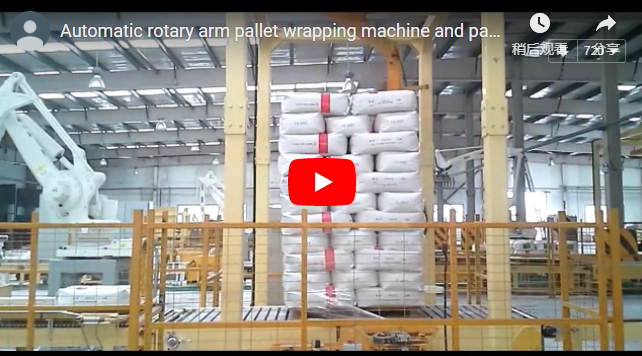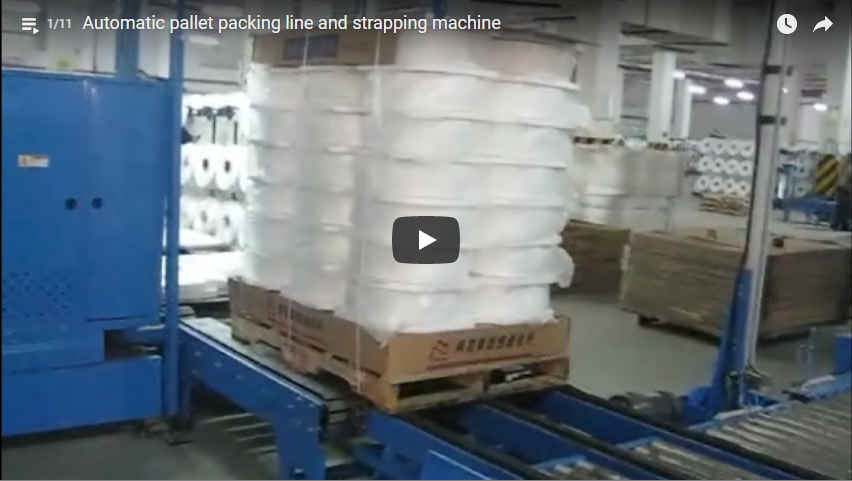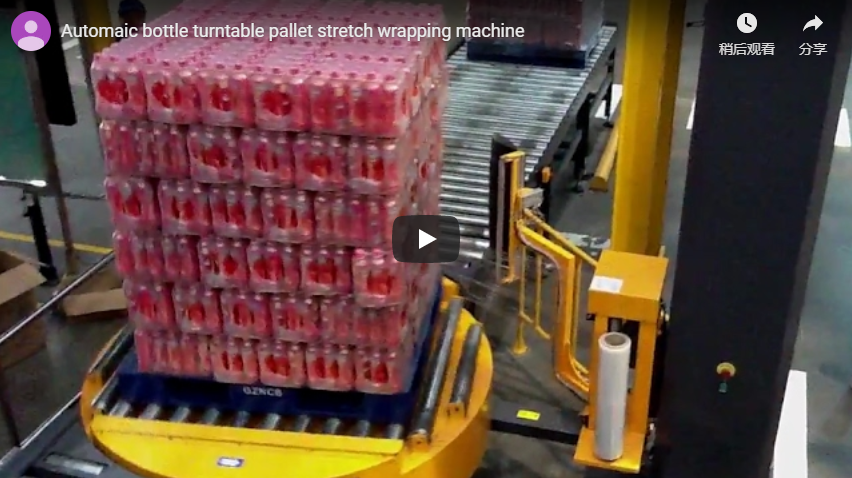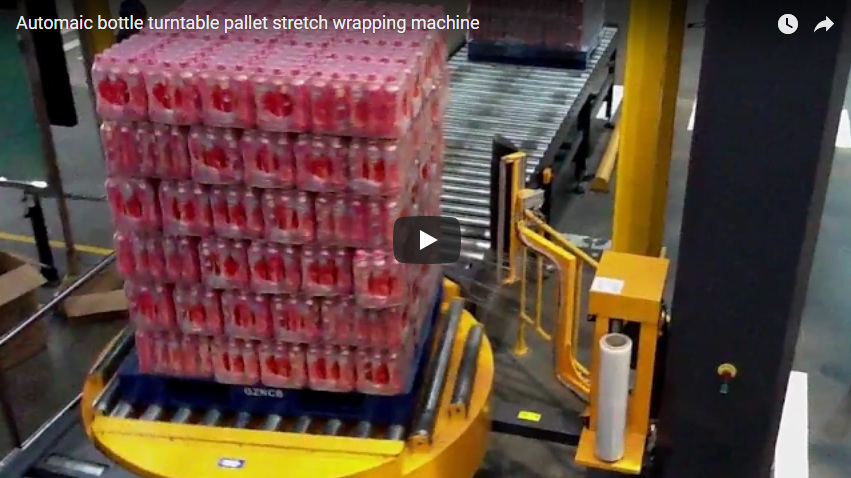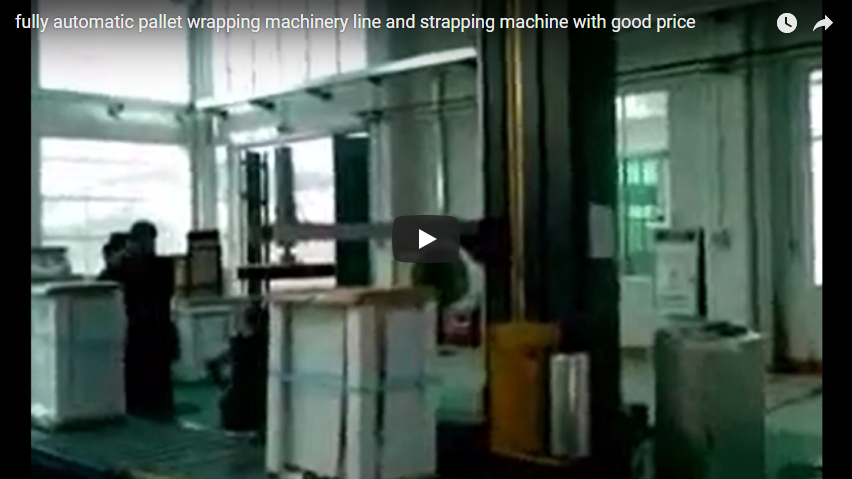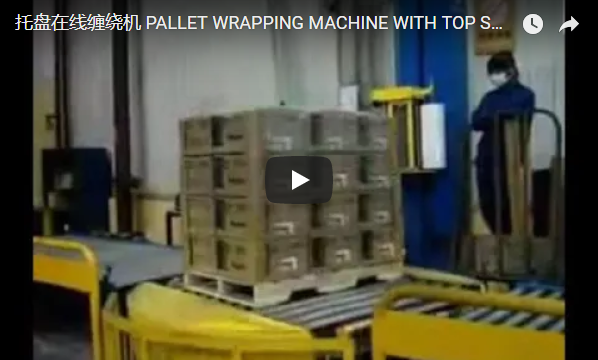1. Introduction: Advanced Pallet Wrapping Automation
The rotary arm pallet wrapping machine equipped with an integrated top sheet applicator, automated roller conveyor system, auto film management, and load detection represents a sophisticated automated packaging solution. It is engineered specifically for securely unitizing and protecting palletized goods, particularly beneficial for operations handling unstable, heavy, or irregularly shaped loads that cannot withstand the rotational forces of traditional turntable wrappers. This integrated system delivers high throughput, enhanced load integrity, and significant operational efficiencies.
2. Core Technology: The Rotary Arm Advantage
Unlike conventional turntable wrappers that rotate the pallet itself, a rotary arm wrapper keeps the load stationary. A wrapping arm, equipped with the film carriage, revolves around the pallet. This fundamental design difference offers several key advantages:
- Load Stability: Eliminates the risk of product shifting or toppling caused by centrifugal forces, crucial for tall, light, or unstable pallet configurations.
- Heavy Load Capacity: Easily handles loads exceeding the weight limits of typical turntable bearings.
- High Speed Potential: Rotary arm mechanisms can often achieve higher wrap speeds (measured in Pallets Per Hour - PPH) compared to turntable systems, especially when integrated with automated conveyors.
3. Enhanced Protection: Integrated Top Sheet Application
The inclusion of an automatic top sheet dispenser significantly enhances product protection. Before or during the wrapping cycle, this mechanism automatically places a layer of protective film (typically polyethylene) across the top of the pallet load.
- Environmental Shield: Provides a robust barrier against dust, dirt, and moisture ingress from the top, critical for warehousing or shipping in varying conditions.
- Load Security & Tamper Evidence: When tucked by the subsequent stretch wrap layers, the top sheet contributes to overall load containment and can offer a degree of tamper evidence.
- Automation: Fully automates a previously manual step, reducing labor requirements and ensuring consistent application.
4. Seamless Automation: Conveyor Integration
The integration of powered roller conveyors transforms the wrapper into a component of a fully automated packaging line.
- Automated Material Handling: Pallets are automatically transported into the wrapping zone, paused for the wrapping and top sheet cycle, and then conveyed out, minimizing forklift interaction and manual handling.
- Increased Throughput: Continuous flow operation significantly boosts overall packaging line speed and efficiency.
- System Integration: Allows for seamless connection with upstream (e.g., palletizers) and downstream (e.g., labeling, strapping) equipment. Common types include powered roller or chain conveyors depending on the load and environment.
5. Intelligent Wrapping: Auto Film & Detection Systems
Modern rotary arm wrappers employ sophisticated systems for optimized film usage and cycle automation:
- Auto Film Clamp, Cut & Wipe: At the cycle's end, the machine automatically clamps the film tail, cuts it cleanly, and wipes it against the load, securing the tail without manual intervention. This is essential for true walk-away automation.
- Load Height Detection: Typically uses photo-eye sensors to automatically detect the top of the pallet load. This ensures the wrap pattern extends sufficiently to cover the load without wasting film by overwrapping excessively high or wrapping empty space.
- Load Profile Sensing (Advanced): Some systems may incorporate sensors to detect the pallet's overall dimensions (length/width) or profile, allowing for more tailored wrap patterns and potentially optimizing film placement on irregular loads.
6. Key Components and Structural Design
Understanding the core components provides insight into the machine's capabilities and reliability:
- Rotary Arm Assembly: The heart of the machine, featuring a robust structural arm, balanced for high-speed rotation. Driven by reliable motors and often controlled via VFD (Variable Frequency Drive) for smooth acceleration/deceleration.
- Film Carriage with Power Pre-Stretch: Critically important for film economy. The carriage stretches the film before application, typically achieving 200% to 300% pre-stretch (meaning 1 meter of film becomes 3 to 4 meters applied). This significantly reduces film consumption and cost while improving load containment force. Electronic tension control ensures consistent film application.
- Top Sheet Dispenser Unit: Houses the top sheet film roll, with mechanisms for controlled dispensing, cutting, and placement onto the load.
- Control System (PLC & HMI): Usually managed by a PLC (Programmable Logic Controller) for reliable industrial operation. A user-friendly HMI (Human-Machine Interface) touchscreen allows operators to select wrap programs, adjust parameters (e.g., top/bottom wraps, rotation speed, film tension), store recipes for different load types, and view diagnostics.
- Frame and Safety Features: Built on a heavy-duty welded steel frame for stability and longevity. Comprehensive safety measures are essential, including safety fencing, access doors with interlocks, and light curtains at conveyor openings to halt operation if personnel enter the wrapping zone.
7. Technical Specifications & Data Comparison (Typical Ranges)
While specific model data varies, here are typical performance ranges for automated rotary arm wrappers with top sheet and conveyors:
| Feature | Typical Specification Range | Importance |
|---|---|---|
| Wrapping Speed | 30 - 70+ Pallets Per Hour (PPH) | Directly impacts line throughput. |
| Max Load Size (LxWxH) | ~ 1400 x 1400 x 2400 mm (55x55x94 in) | Determines compatibility with pallet dimensions. |
| Max Load Weight | 1500 kg - 2500+ kg (3300 - 5500+ lbs) | Must exceed maximum anticipated pallet weight. |
| Rotary Arm Speed | 15 - 30+ RPM | Influences cycle time and PPH. |
| Stretch Film Width | 500 mm (20 in) standard | Standard industrial film size. |
| Film Pre-Stretch | 200% - 300% (Powered) | Key for film efficiency and load holding force. |
| Top Sheet Film Width | Matches or exceeds pallet width | Ensures full top coverage. |
| Power Requirements | 480V/3Ph/60Hz or local standard | Electrical supply needs. |
| Air Requirements | 6 bar / 90 PSI (for pneumatic systems) | Required for clamp/cut/wipe mechanisms. |
Note: These are general ranges. Always refer to specific manufacturer specifications for precise data.
8. Operational Efficiency and User Experience
From a practical standpoint, these machines offer significant advantages:
- Reduced Labor: Automation of wrapping, top sheeting, and film handling drastically cuts manual labor needs per pallet.
- Film Cost Savings: Power pre-stretch systems maximize film yield, leading to substantial savings on consumables compared to manual or less advanced wrapping methods.
- Consistency: Automated cycles ensure every pallet is wrapped to the same pre-defined standard, improving load integrity and reducing damage during transit.
- Ease of Use: Modern HMIs simplify operation, program selection, and troubleshooting. Features like easy film roll threading minimize downtime.
- Return on Investment (ROI): The combination of labor savings, film savings, reduced product damage, and increased throughput typically provides a strong ROI justification for automated systems. Maintenance is generally straightforward, often involving lubrication schedules and periodic sensor checks.
9. Choosing the Right Configuration
Selecting the appropriate rotary arm system involves considering:
- Load Characteristics: Weight, stability, dimensions, and uniformity.
- Throughput Requirements: Required PPH to match production output.
- Operating Environment: Temperature, dust levels, and available space.
- Integration Needs: Compatibility with existing or planned upstream and downstream automation.
- Budget: Balancing desired features and automation level with investment cost.
10. Conclusion: A Strategic Investment in Packaging Automation
The rotary arm pallet wrapping machine with integrated top sheet application, conveyors, and automated controls is far more than just a wrapper; it's a strategic component of modern, efficient packaging lines. By addressing the challenges of wrapping unstable or heavy loads while maximizing automation, enhancing product protection, and optimizing film usage, this technology provides a reliable, high-performance solution. For industries demanding high throughput, consistent load integrity, and reduced operational costs, investing in such an advanced system is crucial for maintaining competitiveness and ensuring products reach their destination safely and securely.

